
CHAPTER 8
BREAKING THE CHAINS
AFRIKANS DOMINATED THE WORLD
by
John Moore
Every great nation invests in its history. Great European nations for example, made it their business to reclaim, restore and reconstitute the history of their classical civilization, or at least the one which they claim to be their classical civilization which is really Greek and Roman. What will all this stolen history do for Black people once it is recovered?
Why do people spend so much time and put so much funds into maintaining Greco-Roman architecture as a part of Federal Buildings? Why would people put so much energy and resources into developing institutions like the Smithsonian Institute to save the history of its people? Why would people spend so much time teaching Greek and Latin in schools to even those people who have no direct connection to Greek and Latin? The Greco-Roman world had already fizzled out before the British world came into existence, yet the British claim the Greeks and the Romans as their cultural ancestors, because it is important for a people to have this kind of cultural and historical rooted-ness. If it were important to the Europeans, Asians and others, it should also be equally important to the Afrikan and Black people in general.
Black people are directly connected to the civilization responsible for laying the foundation for everyone on the planet, and from that viewpoint it must be a source of pride. The Original focus was in countering the negative images that were identified at the beginning of this study, those racists images that had been presented and the manipulation of those images by providing the corrected images not only of ancient Afrikans but also of contemporary Afrikan-Americans, by placing the true images next to the negative ones in order to help counter the damage that was done.
But simply to deny the lie was not sufficient, because when you dig deeply enough into Afrikan cultural traditions, it will be discovered that Afrikan people have made statements about the great questions concerning human life and have also provided leadership in thinking about ways to improve the human condition. So if that is true, then we deserve to give as much attention to that as we do to the study of Aristotle, Kant and all the others who some people promote as the great thinkers of the world. Afrikans had an even longer time to contribute to those questions in an even more profound way.
For the Afrikan people to have in their tradition the oldest text book in the world - The Book of Ptahotep and not even know that it exists is to be denied a vital part of their heritage. To have this type of book which teaches how to live ethically and not be aware of it or even ponder on it, is to be poverty stricken.
The same thing that happens to a sheep dog can happen to a group of people that is always consuming the history of another group of people. For example, the dog that herds sheep for a master is a dog that was raised in a pen not with dogs but with sheep, since this is the way such a dog is trained. The dog is placed in a pen so that it can nurse on a sheep mother, then it grows up thinking of itself as a sheep even though it still has all the mental and physical characteristics of a dog. It becomes obedient to the training of its master, being willing to be taught how to perform certain actions that are not dog like. It will even see its brothers and sisters as the enemy although it came from the same litter as them, because of the peculiar kind of programming that is necessary in order to alienate the dog from himself.
The most important thing that parents can do today in resisting the attempts to "de-Afrikanize" Black people is to become immersed in the knowledge, and this includes the leaders and members of organizations that socialize our people in this study as opposed to just teaching the children. Once the parents are immersed in this kind of knowledge and information, they will be in a better position to make the proper decisions for their children, and this awareness will therefore act as an effective counter to the kinds of images that have been and are still being promoted about Black people.
The development of an independent socialization process is essential, and any group that is truly successful carves out niches at which time it feeds its own cultural and social tradition. Groups failing to do this allow their individual members to grow up with feelings of isolation, lack of purpose, lack of a sense of direction, lack of motivation and a vulnerability to any foreign groups that operate as a unit.
Such a challenge could be taken on by the churches, through establishing libraries and cultural centres while ensuring that Fraternities, Sororities and various Orders provide the same facilities, so that the part of our soul and mind which is not now being fed by the standard institutions of society or that are being fed with negative material can be improved, and in some cases overcome, in order to have that positive orientation in our lives.
The message to Black parents regarding Afrikan history is “that full freedom requires the restoration of memory, the reclamation of identity, the redevelopment of culture, the control of socialization, the accumulation of wealth, and the destruction of segregation”. This should be our road map, because everything that was done will have to be reversed and we must be conscious of the reversal of those things that were done which caused our degradation.
But what does much of this history say about the reference to allegiance when President Reagan sent the military into Grenada where Black soldiers were seen fighting against Black people. It is obvious that the American foreign policy is an ethnic one, since it was developed by an ethnic group for the benefit of that ethnic group. Black people had no participation in the development of the American foreign policy for the most part, since it was basically pro-European as witnessed by the soft position taken towards the apartheid government of South Afrika.
They must be seen as kith and kin, because the same rules that caused them to arm the contras to fight in Nicaragua proclaiming that they are going there to establish democracy should also have made them take up arms to go in and take down the government of South Afrika during the apartheid period. They will go into non-European countries like Grenada, Iraq, Pakistan, Vietnam and so on, but seem unable to draw the mental and moral courage to confront South Afrika or Israel. They could not even pass economic or any type of sanctions as has been the case with Cuba for many years which clearly shows their foreign policy to be an ethnic one. Once there is ethnic protection going on, Black people ought to be ethnically oriented as well.
Below is Hatshepsut, one of the most famous queens who ruled Egypt. There were other women with Horus titles that became independent rulers, but Hatshepsut was the most famous one. Just to highlight her Afrikan-ness, observe the woman at the bottom of the first image standing in profile against the carving of Hatshepsut.

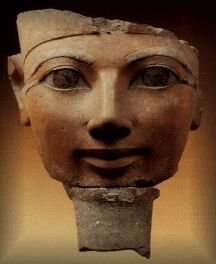
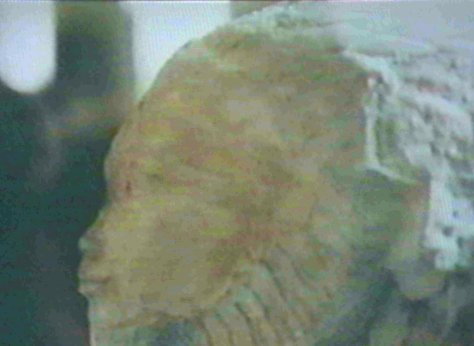
Hatshepsut was the only queen to actually develop a temple in the Valley of the Kings. This is the temple which architects all over the United States still study as one of the finest examples of architecture that blends in with its natural surroundings. Take note of the columns because this design can be seen in many buildings throughout Europe and the U.S.A.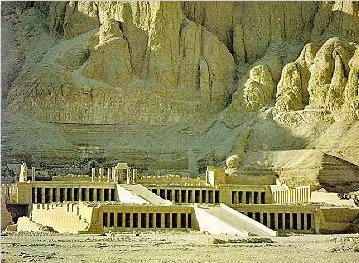
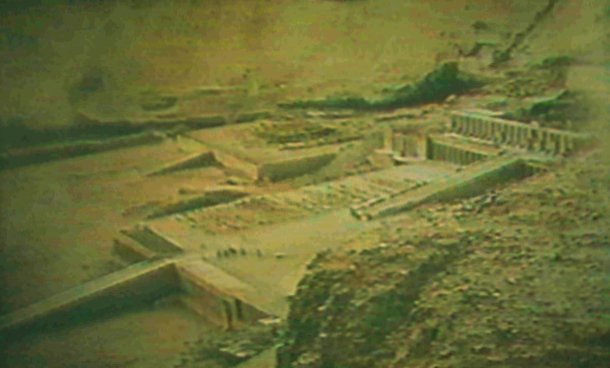
Even though Hatshepsut had difficulties when she took over as Pharaoh, it was less a matter of male oppression over female. Both roles were well respected which is the normal Afrikan way.Women were gods, queens and rulers as there was no such thing as giving women a back seat, and this should remind Black men that the Afrikan position on male-female relationships has always been one of mutual respect in its natural state.
This is Senenmut, the last architect of that temple, and you can see that he looks like the others of the Nile Valley, Black.
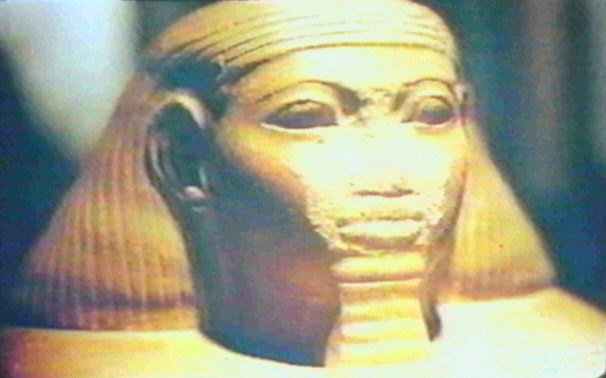
This is an actual carving of Hatshepsut's mother with the God Amon (Amen /Amun), but in order to see it the way it really is, a sketch in this case had to be used.
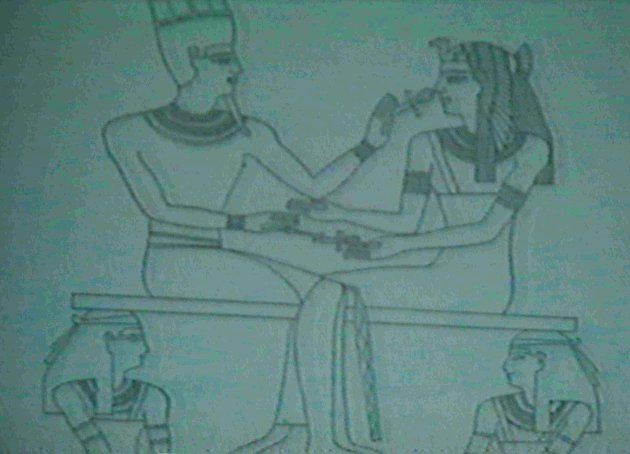
The God Amon is on the left with Hatshepsut's mother on the right who is being given life. This image shows one of the numerous times that the virgin birth story was announced. In other words, almost every Pharaoh or king including the gods, talked about the virgin birth. This is one of the actual renditions of the Immaculate Conception. God is giving the ankh or the cross of life to Hatshepsut's mother, the very cross that was used in the Christian church at the beginning of its founding.This is one of the early pictures of the Immaculate Conception, but note the time period is in the 18th dynastic period which would be around 1,400 before the birth of Christ. This image was obviously given a European touch as the artist used a bit of free reign, because what is actually on the sketch is not an accurate reproduction of what is on the wall when they are compared. It is being used only as a sketch to allow us to see what could not be clearly seen in the photograph.
Copied from one of the articles in the journal of Afrikan civilization is a list of Afrikan queens from Egypt starting from the first dynasty to the 19th dynasty. Each of the queens has a name that appears on the left, but what is important is that on the right, the word Regent or Horus name is shown. If a queen had a Horus name, it meant that she ruled in her own right since every king had a Horus name. So if a queen had Horus name it meant that she was not merely someone who stood in for her husband, but that she was one who actually ruled in her own right. This is important because some people speculate that Hatshepsut was the first queen in history but she was not as you can see from the list, because there were other queens who had Horus names that reigned before her.
Horus refers to the God who was called by that name whose actual name in Kemetic is Heru. Horus (Heru) is a part of that holy family of Ausar, Auset and Heru. Kings then identified themselves with Horus, so they would have their real name and also a Horus name in much the same way as having a Christian name or names associated with the Disciples of Christ. So when converting to Christianity, a person would change his name to one like John, Mark, James, Mathew and so forth. The ancient Kemites (Egyptians) did the same thing with Horus names.
Earlier it was mentioned that there would be pictures of royal mummies especially from the 18th dynasty. One was shown of Sekenenre /Seqenenra (Tao II) who started the war of liberation that drove out the invading armies from Asia in the 17th dynasty thus allowing the 18th dynasty to commence. Below are more of the royal mummies that were discovered, but as mentioned, it is now very hard to come across these royal mummies at present. It is obvious from looking at them that their skin is Black.
This is the mummy of Thutmose I on the left, and on the right is a granite statue of Thutmose III which is in the British museum. His mummy will be shown later on.
The main reason for emphasizing this particular Pharaoh of the 18th dynasty is because he was the one who carried the extent of the Egyptian empire after it became an empire up to the Tigris River, to the Euphrates River, and into Persia, including parts of Europe as well. This Pharaoh conquered and ruled over what was then the known world. He was probably the most powerful Pharaoh in Egyptian history, and again from his facial features it is clear that he was Black.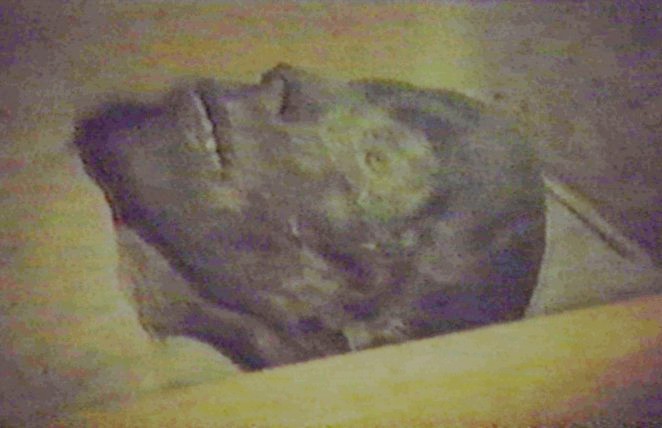
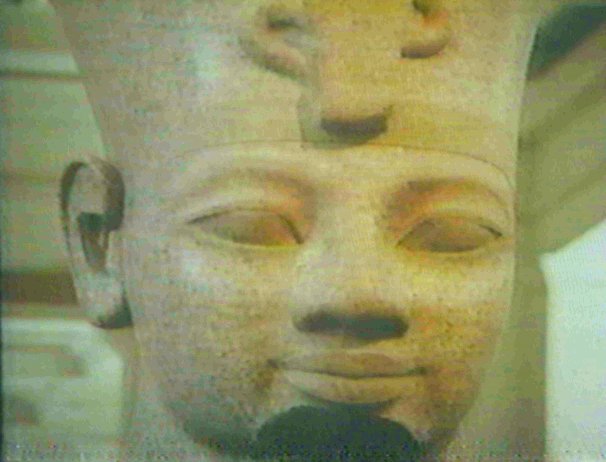
Thutmose III (Ahmose 1) liberated Egypt from the Semitic Hyksos invaders after two hundred years of brutal, oppressive rule. These Semitic, pastoralist Hyksos who invaded Egypt, came from the Southwest Asia region, but Thutmose III was successful at driving out the Hyksos armies because of his proper planning and military skills. But as the centuries passed by, more Semites, Arabs, Europeans, Greeks, Romans, Assyrians, Libyans, Babylonians, and Persians descended upon the great land of the Blacks (Egypt), completely altering its gene pool from pure Black African to the mixed people now inhabiting those Black lands in the North, while the purer Black Egyptians reside mainly in the Southern area. These are some Black women of Egypt at around 1905.
The Afrikans had dominated the world, a fact that is contrary to what Black people have been taught all their lives, believing that they were nothing more than just slaves, and that their roots began with the movie entitled "Roots," and their history began at the time of the Transatlantic Slave Trade, but as revealed, this is totally false. One of the ways this belief is perpetuated is by means of those images which people believe when they think of Egypt, Nefertiti, Cleopatra and other figures that appear to violate the principle mentioned earlier, which stated that a native Black Afrikan People populated and ruled Egypt for centuries.
When pictures like this one of Thutmose III are seen, it clearly does not blend in with the image people have of Nefertiti that is in the Berlin museum, but the overwhelming number of images and mummies that are there of the royal family prove them to be an Afrikan people. Here is the mummy of Thutmose III in the centre, which can now be used to compare against the granite statue to show that there is a very close resemblance between the statue and the mummy.

On the left is a picture of an Asian, or at least with stereotypical Asian features for that mummy.
On the right is a picture of the mummy of Seti I. According to Dr. Ben Jochannan, the nose on the mummy of Seti I was missing when it was found and was added afterwards. Note that the added nose is an aquiline one, and although many Afrikans have aquiline noses, if the mummy did not have a nose at the time, it would be grossly misleading to add one, since this is one form of distorting history.
This is the mummy of Thutmose IV. Keep in mind the debate mentioned earlier that occurred when all these mummies kept turning up Black, so the question was raised, "is this really the way the skin was in life?"
The answer often given by those who studied mummies was that the embalming fluid was responsible for a change in the colour of the skin after death.
This is what had prompted Dr. Cheikh Anta Diop to develop the chemical skin test in order to determine the composition of the melanin in the skin. He was permitted to conduct these tests, and it was clearly shown that the mummies were indeed of Black people. As a result, the mummies were quickly removed from general view thus preventing him from completing the remainder of the tests on the other royal mummies.
© John Moore - Barbados, W.I. (March 2000) ©. All rights reserved.
